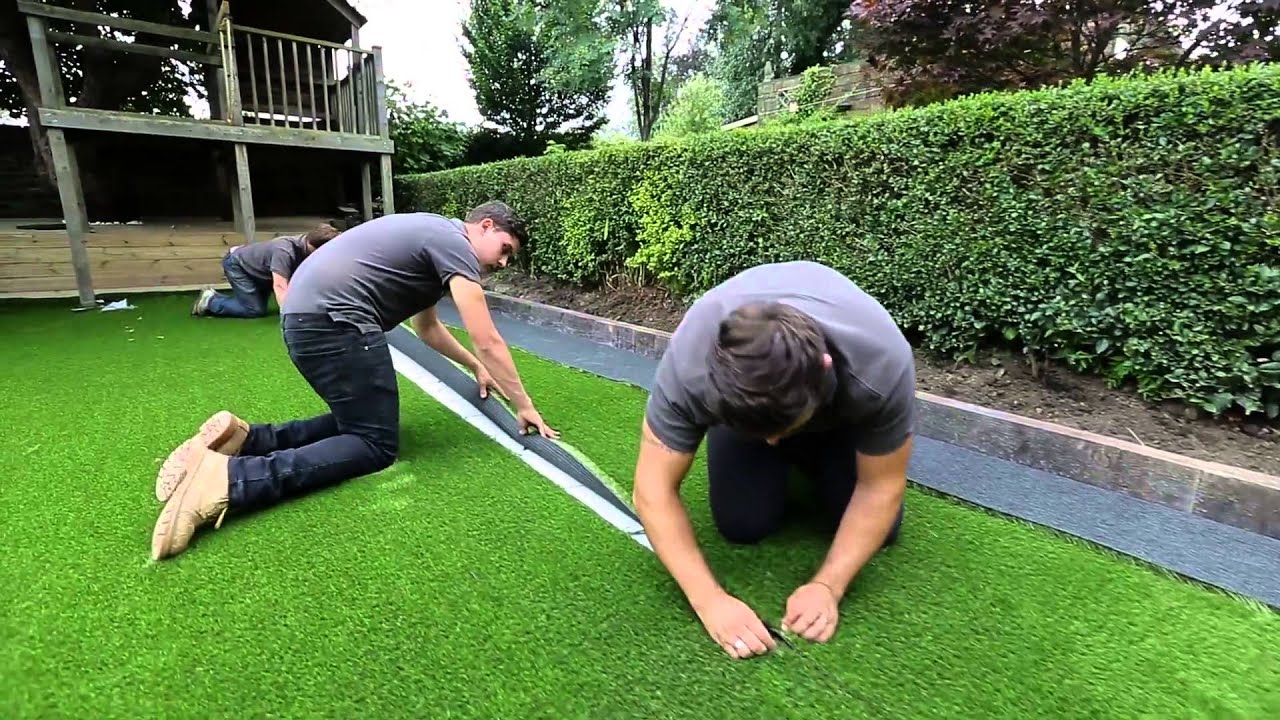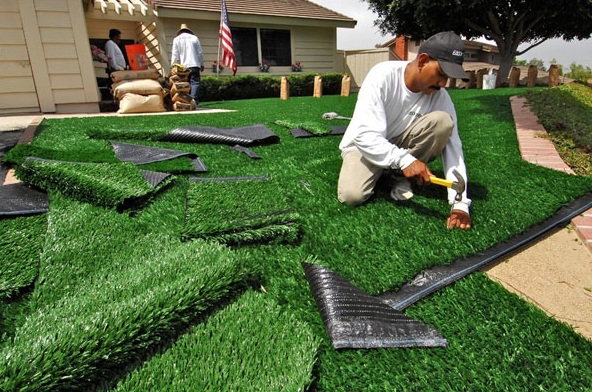Top Phoenix Turf Companies Delivering Premium Synthetic Grass Solutions
Top Phoenix Turf Companies Delivering Premium Synthetic Grass Solutions
Blog Article
Delve Into the Environmental Advantages of Opting for Artificial Turf Solutions
The fostering of synthetic grass options offers an engaging chance to address pressing environmental obstacles. By significantly decreasing water use and minimizing the application of harmful chemicals, these choices not just advertise sustainable landscape design yet likewise secure neighborhood environments. Additionally, the reduced carbon footprint related to decreased maintenance activities adds to an extra lasting strategy to land monitoring. The implications of these benefits expand past plain conservation initiatives, raising concerns regarding their long-lasting influence on environment conservation and general environmental balance. Checking out these measurements exposes a complex interaction worth thinking about.
Water Preservation Perks
One of the most considerable advantages of artificial grass is its capacity to save water. In comparison, fabricated turf does not need watering, substantially reducing the total need for water resources.
By getting rid of the demand for regular watering, synthetic grass adds to sustainable landscape techniques and helps reduce the ecological impact of too much water intake. Furthermore, the preservation of water includes the decrease of runoff, which can result in dirt erosion and river air pollution.
In addition, the installation of synthetic lawn permits towns and property owners to allocate water resources extra successfully, focusing on necessary uses such as drinking water and agriculture. The change in the direction of synthetic grass not just promotes responsible water usage but additionally straightens with more comprehensive ecological objectives intended at maintaining natural deposits.
As areas progressively focus on sustainability, the water preservation benefits of artificial lawn offer a compelling case for its fostering in residential and business landscaping projects.
Reduced Chemical Usage
The change to artificial turf dramatically lowers the dependence on chemical treatments frequently used in all-natural lawn maintenance. Traditional grass administration normally involves the application of chemicals, herbicides, and plant foods to advertise development and control insects. These chemicals can present dangers to human health and wellness, regional wildlife, and the setting, adding to soil and water contamination.
In contrast, synthetic grass removes the requirement for these harmful compounds. As soon as installed, it requires very little upkeep, mostly containing regular cleaning and irregular infill replenishment. This reduction in chemical usage not only benefits the immediate setting yet additionally adds to more comprehensive ecological security. By minimizing the release of artificial substances into the ecosystem, man-made turf promotes much healthier dirt and water supply.
Furthermore, the lack of chemical overflow related to synthetic lawn installments aids secure local rivers from pollution, supporting aquatic life and keeping biodiversity. Arizona artificial turf. As communities significantly prioritize sustainable techniques, selecting fabricated turf presents a practical service that lines up with ecological preservation goals. Through this shift, homeowner can enjoy rich environment-friendly spaces without endangering ecological health, paving the means for a more lasting future
Lower Carbon Impact

Moreover, the installation of synthetic grass can cause significant water preservation. Natural grass call for considerable amounts of water for watering, which not only includes to the carbon footprint connected with water removal and therapy yet likewise pressures neighborhood water resources. On the other hand, artificial grass needs marginal upkeep, calling for no watering, thereby considerably decreasing water use see and its connected energy costs.
Additionally, the durability of synthetic grass adds to its lower carbon influence. With a lifespan of up to 15 years or even more, the requirement for frequent substitutes is diminished, resulting in less waste and lower power consumption in manufacturing and disposing of standard yard options. Generally, fabricated grass provides a lasting alternative for eco aware landscape design.
Habitat Conservation
Habitat conservation is a critical factor to consider in the dispute over landscape design choices, especially when comparing synthetic grass to natural grass. All-natural grass lawns often call for extensive maintenance, including making use of chemicals, herbicides, and fertilizers, which can adversely influence neighborhood ecosystems. These chemicals can leach right into the soil and waterways, damaging native flora and animals and disrupting local habitats.
Synthetic turf gets rid of the requirement for harmful chemicals, thus shielding neighboring wild animals and maintaining the integrity of bordering ecosystems. The installation of synthetic lawn can lead to the conversion of former yard locations right into even more biodiverse landscapes, such as pollinator gardens or indigenous plant locations, which can support regional wildlife.
Ultimately, the change to fabricated grass not just saves water and reduces upkeep initiatives but likewise fosters a more unified relationship in between human check here activities and the all-natural environment, advertising environment preservation at the same time.
Long-Term Sustainability
Lasting sustainability is an essential factor in examining the advantages of synthetic grass over standard turf lawns. Among one of the most considerable advantages of synthetic grass is its longevity; it can last approximately 15-20 years with minimal maintenance, whereas all-natural grass needs constant reseeding and substitute. This longevity lowers the requirement for consistent resources, such as water, fertilizers, and pesticides, which are important for maintaining a healthy and balanced turf lawn.
In addition, synthetic grass adds to a decrease in carbon discharges connected with grass treatment devices. Traditional grass often need gas-powered lawn mowers, leaners, and blowers, all of which add to air pollution. Artificial turf companies phoenix. On the other hand, synthetic grass eliminates the demand for such tools, promoting a cleaner environment
Moreover, the manufacturing of synthetic grass significantly makes use of recycled products, enhancing its sustainability account. As makers embrace environment-friendly techniques, the ecological footprint of synthetic grass remains to reduce.

Final Thought
The adoption of fabricated lawn services presents considerable environmental benefits, consisting of substantial water conservation, decreased reliance on unsafe chemicals, and a lower carbon impact. Moreover, synthetic grass help in protecting natural environments by reducing land disruption and promoting long-term sustainability with the usage of resilient products. Jointly, these factors underscore the potential of synthetic grass to add positively to environmental health and wellness and provide a feasible option to typical landscape design techniques in a significantly resource-conscious globe.
In comparison, man-made grass does not require watering, considerably reducing the total need for water sources. By decreasing the release of synthetic substances into the environment, fabricated turf advertises much healthier soil and water systems.
Moreover, the installation of fabricated grass can result in considerable water conservation. In contrast, fabricated lawn needs minimal upkeep, requiring no watering, thereby substantially minimizing water usage and its linked energy prices.

Report this page